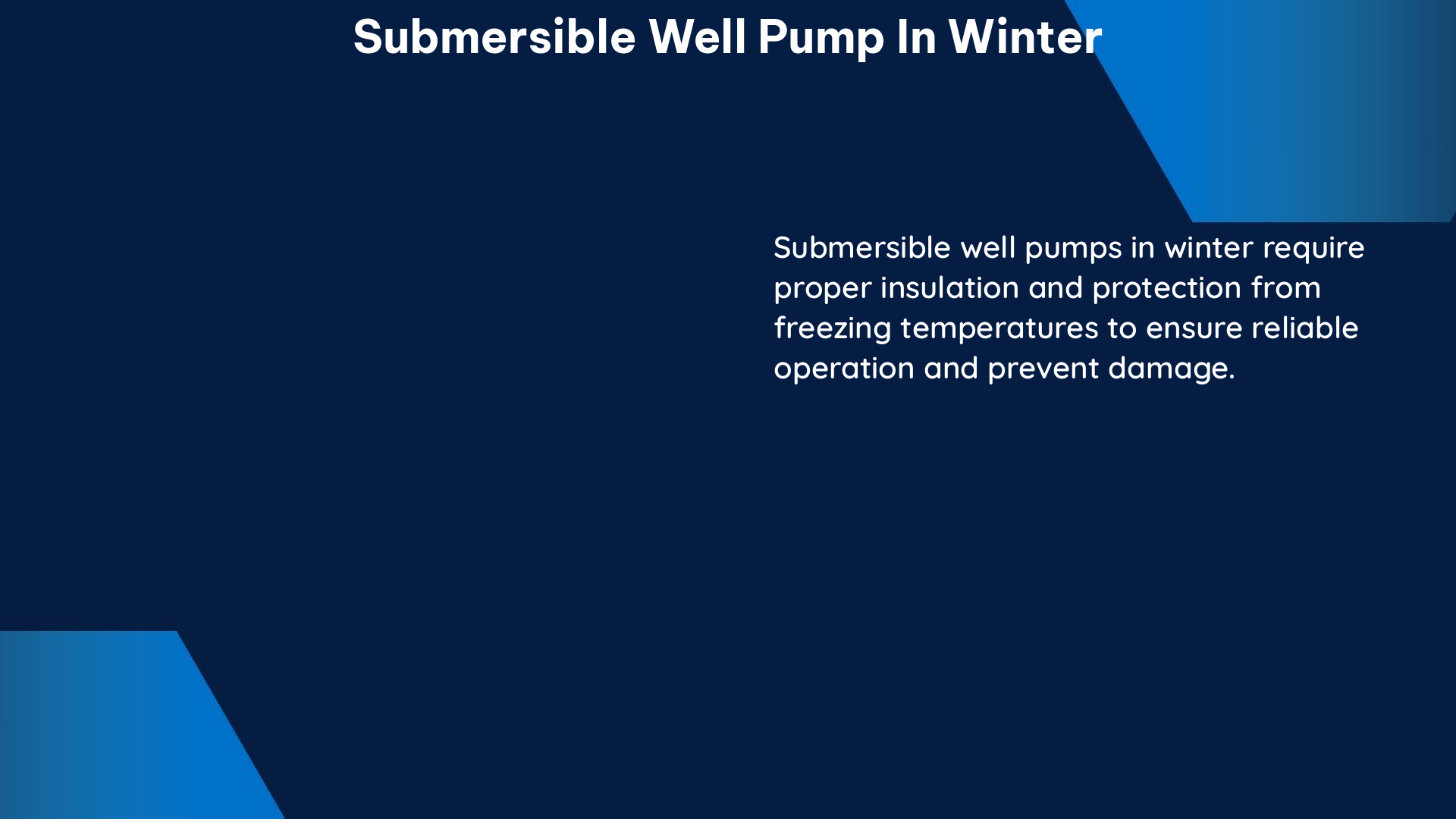Submersible well pumps are designed to operate in harsh conditions, including extreme temperatures. However, the performance of these pumps can be affected by cold weather, and it’s essential to understand the factors that can impact their efficiency and reliability during the winter months.
Improving Energy Efficiency with Permanent Magnet Synchronous Motors (PMSM)
One study found that the energy efficiency of submersible well pumps can be significantly improved by using permanent magnet synchronous motors (PMSM) instead of induction motors. The study revealed that PMSM pumps had a higher efficiency and lower energy consumption than induction motors, especially during dry period (peak) operation.
| Pump Type | Effective Power (kWh/a) | Pressure Loss (bar) |
|---|---|---|
| PMSM | 149 | 46.50 |
| Induction Motor | 196 | 50.41 |
The PMSM pumps also had a lower pressure loss and a higher pressure at the pump outlet, which can be beneficial in cold weather conditions. These differences can have a significant impact on the performance and energy efficiency of the pumps, making PMSM a more suitable choice for submersible well pumps in winter.
Preventing Overloading and Shutdowns

Another factor to consider in cold weather is the potential for the pump to overload and shut down due to low temperatures. One forum post described a situation where a submersible well pump was consistently overloading and shutting down during cold weather. The post suggested that the problem could be due to a failing start capacitor, which can be affected by temperature changes.
It’s important to note that the pump in this case was submerged 220′ below the ground surface, and the lines leading from the well casing were 4′ below the surface of the ground all the way to the house. This suggests that the problem may not be directly related to the cold weather, but rather to an issue with the pump or its components.
Proper Insulation and Placement
To prevent issues with submersible well pumps in cold weather, it’s crucial to ensure that the pipes are well-insulated and that the pump is located below the frost line. This helps to maintain the temperature of the pump and the water flowing through the system, reducing the risk of freezing and other cold-weather-related problems.
According to a study by the University of Minnesota Extension, the frost line depth can vary significantly depending on the region and soil type. In northern climates, the frost line can reach depths of 4 to 6 feet or more, while in milder regions, it may only extend a few inches into the ground. It’s essential to consult local resources or a professional to determine the appropriate depth for your well pump installation.
Regular Maintenance and Inspection
In addition to proper insulation and placement, it’s recommended to regularly inspect and maintain the submersible well pump and its components to ensure they are in good working order. This includes checking for any signs of wear or damage, cleaning the pump and its components, and replacing any worn or faulty parts.
Regular maintenance can help identify and address any issues before they become more serious, reducing the risk of pump failure or performance issues during the winter months. It’s also a good idea to have a professional inspect the well and pump system periodically to ensure everything is functioning as it should.
Conclusion
Submersible well pumps are designed to operate in harsh conditions, but their performance can be affected by cold weather. By using PMSM pumps instead of induction motors, you can improve the energy efficiency and performance of your submersible well pump in winter. Additionally, proper insulation, placement below the frost line, and regular maintenance and inspection can help prevent issues like overloading and shutdowns.
By following these best practices, you can ensure your submersible well pump continues to operate reliably and efficiently throughout the winter season.
References:
– Beck, M., Sperlich, A., Blank, R., Meyer, E., Binz, R., & Ernst, M. (2018). Increasing Energy Efficiency in Water Collection Systems by Submersible PMSM Well Pumps. Water, 10(10), 1310.
– Submersible Pump Overloading in Cold Weather – Maker Pro (2005). Retrieved from https://maker.pro/forums/threads/submersible-pump-overloading-in-cold-weather.56811/
– Some Cold Weather Well Issues – DoItYourself.com (2018). Retrieved from https://www.doityourself.com/forum/wells-sump-pumps-septic-sewage-systems/588692-some-cold-weather-well-issues.html
– Frost Depth in Minnesota – University of Minnesota Extension. Retrieved from https://extension.umn.edu/soil-and-water/soil-basics#frost-depth-in-minnesota-1119174

The lambdageeks.com Core SME Team is a group of experienced subject matter experts from diverse scientific and technical fields including Physics, Chemistry, Technology,Electronics & Electrical Engineering, Automotive, Mechanical Engineering. Our team collaborates to create high-quality, well-researched articles on a wide range of science and technology topics for the lambdageeks.com website.
All Our Senior SME are having more than 7 Years of experience in the respective fields . They are either Working Industry Professionals or assocaited With different Universities. Refer Our Authors Page to get to know About our Core SMEs.